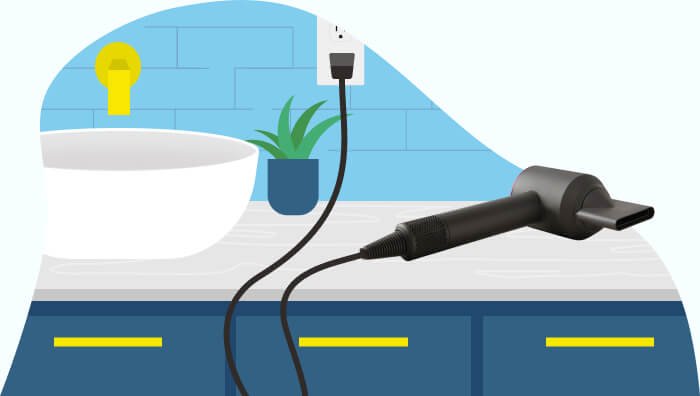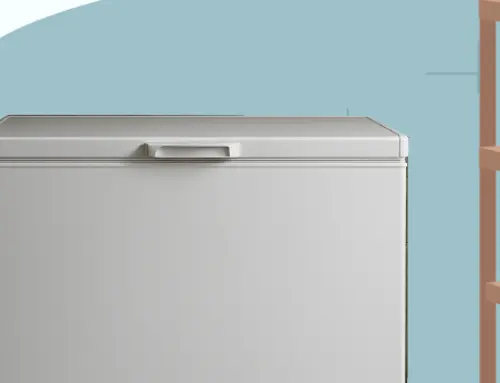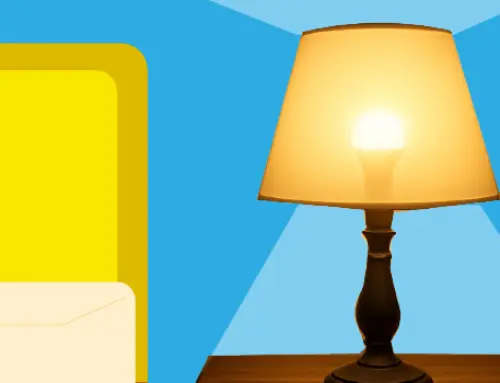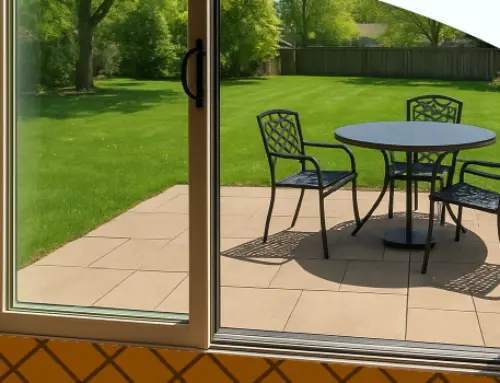Energy Consumption & Cost of Running a Hair Dryer
by Tyler Castle
9 min read

When it comes to appliances that use electricity, some smaller appliances can use a surprising amount of energy. Hair dryers, or blow dryers, can use more wattage than much larger appliances, such as space heaters or even mini refrigerators.
If you’re looking for ways to better manage your electricity bill, it can be helpful to know how much energy you’re using with a blow dryer. This post takes a look at how much electricity your blow dryer actually uses and how you can save energy and money without having to sacrifice the use of your hairdryer.
What is a kilowatt hour (kWh)?
Before we can determine how much energy an appliance uses, we have to understand watts and kilowatt hours. Watts are the standard measurement rate of energy consumption, with one kilowatt (kW) equalling 1,000 watts.
A kilowatt hour (kWh) is the metric utility companies use to gauge how much electricity your residence uses over time — specifically, the amount of energy used to generate 1,000 watts of power for one hour. Your monthly electricity bill is based on how much your utility provider charges you per kWh. The rate will vary by your location, provider, and season — with certain times of year (such as summer) incurring higher utility rates due to increased demand from more consumers.
For more information about kilowatts and kwH, visit our other blog post “What is a kilowatt-hour and why does it matter?”
How much energy does a blow dryer use?
Most hair dryers will display their wattage rating, which represents the amount of electricity that the hair dryer uses per hour. You can usually find the wattage on the product label, on packaging or in the owner’s manual.
A review of different hair dryer models on Amazon shows a range from under 1,000 watts for compact models to over 2,000 watts for high-end, salon-grade blow dryers. On average, most hair dryers use between 800 and 1,800 watts (W) of electricity, with higher end models using as much as 2,500 watts. That’s more than even larger appliances, such as full-size refrigerators (which average around 800 watts) or space heaters (which use 1,500 watts on high settings).
Some models also have variable settings for air speed and heat, with higher speeds and hotter temperatures using more wattage.
Determining how many watts, amps and volts a hair dryer uses
If you don’t have the listed wattage for your blow dryer, then the simplest way to determine the wattage will be to calculate it via the number of volts and amps.
- Volts (V): Short for voltage, volts measure the difference in electric potential between two points in an electrical circuit. This difference is what causes electric charges to flow from an outlet to your appliance. Voltage tells you how much electrical potential the hair dryer needs to operate. Electrical outlets in North America supply 120 volts, which is sufficient for most appliances.
- Amps (A): Short for amperes, amps measure electrical current. The amperage rating tells you the number of electrons flowing through a circuit, which is how much electrical current the appliance draws. More powerful hair dryers, as well as less efficient ones, will have higher amperage ratings.
Multiply the voltage by the amperage to determine how many watts your blow dryer uses, which will also tell you the rate of energy consumption. Depending on the model, a hair dryer usually uses between 10 to 15 amps when connecting to a 120-volt outlet.
- Using the above example of 120 volts x 15 amps results in 1,800 watts.
Now that you have the wattage, you’ll need to calculate the kWh energy consumption of your hair dryer:
- Because 1 kilowatt is equal to 1,000 watts, start by dividing the wattage by 1,000, which for our example is 1,800 / 1,000 = 1.8 kWh.
- Now, make a rough estimate of how long you use the hair dryer in a day. Here’s some quick reference numbers for you:
- 30 minutes a day would be .5 hours
- 15 minutes a day would be .25 hours
- 10 minutes a day would be .16 hours
- 5 minutes a day would be .08 hours
- Multiply the kWh by the number of hours. For our example we’ll use 10 minutes:
- 1.8 kWh x .16 hours = 0.288 kWh a day.
- Now you can do further calculations to find your weekly, monthly and annual energy use:
- 0.288 kWh a day x 7 days = 2.01 kWh a week
- 0.288 kWh a day x 30 days = 8.64 kWh a month
- 0.288 kWh a day x 365 days = 105.12 kWh a year
How much does it cost to run a hair dryer?
Once you know your hair dryer’s kWH average for a span of time, you’ll need to multiply that value by the kWh usage rate charged by your utility company.
For example, at the U.S. average cost of 16.21 cents per KwH, it would cost 32.6 cents a week to use our example hair dryer. That’s not too bad, but if it takes you a half an hour a day to blow dry your hair, then that cost jumps to $1.02 a week, which is about $53 a year.
Here is a quick reference guide featuring a selection of time periods estimating how much it would cost to use a hair dryer at low and high settings.
Cost to Run a Hair Dryer for 10 Minutes a Day
(at U.S. Average of 16.21 cents per kWh)
| For 1 day
(8 hours) |
For 1 week
(7 days) |
For 1 month
(30 days) |
For 1 year
(365 days) |
|
|---|---|---|---|---|
|
800 watts Low Setting |
$0.02 | $0.14 | $0.62 | $7.58 |
| 1,800 watts
High Setting |
$0.046 | $0.32 | $1.40 | $17.06 |
And here’s a comparison of annual electricity costs for different states based on their average kWh charges.
Annual Cost to Run a Hair Dryer for 10 Minutes a Day in Different U.S. States*
| Michigan
19.06 cents per kWh |
Pennsylvania
18.43 cents per kWh |
Ohio
16.01 cents per kWh |
Illinois
15.83 cents per kWh |
Indiana 15.17 cents per kWh |
|
|---|---|---|---|---|---|
|
800 watts Low Setting |
$8.91 | $8.61 | $7.49 | $7.39 | $7.10 |
|
1,800 watts High Setting |
$20.03 | $19.36 | $16.83 | $16.64 | $15.95 |
*costs are based on EIA estimation of average kWH as of October 2023.
Is it more expensive to use a powerful hairdryer?
While higher settings from more powerful hair dryers will use more power, using higher temperatures will dry your hair faster so you won’t need to run your hair dryer as long.
Tests have shown that higher heat settings will draw more electricity than higher blow settings. However, a New York Times review of different hair dryer models found that, while higher heat is effective, higher blow settings did little to dry hair faster. So, if higher heat allows you to dry your hair in a shorter amount of time, then you could be using less overall electricity.
Generally, because a hair dryer’s high setting uses more than twice as much wattage as the low setting, if you can dry your hair on low in less than twice the time it takes on high, you’ll save electricity. You’ll need to time how long it takes to dry your hair at different heat and blow settings to see which is the most effective and efficient. Just remember that long use of higher heat settings will risk damaging hair.
FAQs
Does a hair dryer use a lot of electricity?
While the exact amount of wattage will depend on the model and settings, hair dryers can use between 800 watts and 2,500 watts of electricity, which is a relatively large amount of electricity compared to other, larger appliances such as refrigerators and space heaters.
How much does it cost to run a hair dryer for 15 minutes?
The cost to run a hair dryer will depend on its wattage and what your utility provider charges you per kWh. On average, running a 1,800 watt hair dryer for 15 minutes will cost 7 cents at the U.S. average cost of 16.21 cents per KwH.
Does leaving a hair dryer plugged in use electricity?
Unlike other “energy vampire” appliances that continue to draw power when plugged in but not in use, most hair dryers will draw only a negligible amount of electricity. While you’re not really wasting energy by leaving your hair dryer plugged in, it’s recommended to unplug it when it’s not in use, especially if you’re going to leave the house for an extended period of time.
Is there a difference between a blow dryer and a hair dryer?
They’re both names for the same thing. Blow dryer is the more common term in North America, while hair dryer is used more internationally.
What’s the best wattage for a personal hair dryer?
According to most stylists, the recommended wattage for personal hair dryers range from 1,800 to 1,850 watts.
Do expensive hair dryers dry hair faster?
Higher heat settings is what will dry hair faster. The major differences in expensive hair dryers come down to features, comfort, attachments and weight. Spending more money on a fancy Dyson hair dryer won’t necessarily dry your hair faster, but it could prove more pleasant to use.
How can I save on electricity with my hair dryer?
Small, but powerful, the amount of electricity your hair uses can really add up if you’re using it for extended periods of time every day. If you use a hair dryer on a regular basis, there are ways to cut down on your energy costs.
- Use your hair dryer for shorter periods of time. Even just cutting your hair drying time down from 15 minutes to 10 minutes can save you money over the course of a year. Remember that extended use of a blow dryer on high heat can cause damage to hair.
- Lower your heat settings. Higher heat settings use higher wattage, so if you’re able to dry your hair in about the same amount of time with lower heat setting and higher airflow, you’ll use less power.
- Skip a day. Even if you wash your hair every day, consider letting it air dry naturally every now and then. Not only can it save you money, it can give your hair a healthy break from the heat.
- Upgrade to a more efficient model. Older, less efficient hair dryer models may use higher wattage without as much heat. Consider purchasing a new model, especially as even higher-quality hair dryers will last only 5-6 years with steady use.
- Choose an energy plan that allows you to be more flexible with your electricity. If you want more control over your energy bill and don’t want to worry about spikes in your kWh charges, see if your retail energy provider offers Unlimited Energy or Fixed-Rate plans.Fixed rate plans guarantee a cost that does not change for a specified period of time while unlimited energy plans allow you to pay the same amount every month without worrying about fluctuating energy costs.*You can even choose Earth-Friendly Energy plans if you want to use renewable electricity to power your appliances.
* Restrictions apply. Enrollment based upon program eligibility. Customers using more than 125% of normal monthly usage as determined by Santanna may be required to switch plans.
Tyler is an experienced energy professional, having worked for Santanna Energy Services, for the past four years. He is passionate about renewable energy and believes that diversifying the energy grid is the key to a sustainable future. Tyler is dedicated to supplying consumers with the best possible energy solutions and works diligently to make sure that Santanna can deliver the highest quality service.







